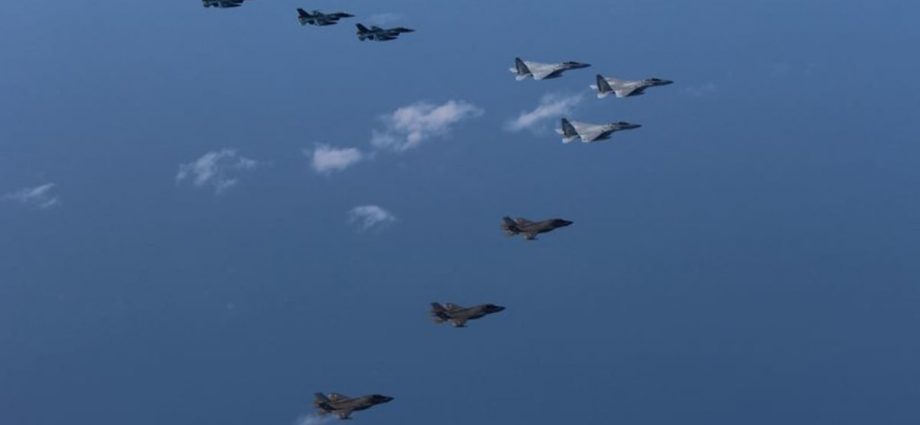
In crafting its defence plans, Japan needs to consider a scenario in which Washington does not respond to a Chinese attack on Taiwan, said Yasuhiro Matsuda, an international politics professor at Tokyo University and former Ministry of Defence senior researcher.
“If Japan can strengthen its defence capability … then China’s calculation to attack US forces on Japan will be quite different, the cost and risk of a Taiwan operation will be quite high,” Matsuda said this month during an online discussion hosted by the Rand Corporation think tank.
ARMS RACE
Russia’s invasion of Ukraine, which it calls a “special operation”, has helped shift public opinion in Japan away from the postwar pacifism that has dominated defence policy for decades.
In an opinion poll published by public broadcaster NHK this month, 55 per cent of 1,247 people surveyed said they supported increased defence spending, compared with 29 per cent who opposed it. Of those backing a stronger military, 61 per cent said Japan should pay for it with public spending cuts.
In July, Prime Minister Fumio Kishida won national upper house elections with a pledge to “substantially” increase defence spending. His ruling Liberal Democratic Party promised to double the military budget to about ¥10 trillion (US$68 billion) within five years.
That extra money will pay for longer-range missiles – improved Mitsubishi Heavy Industries (MHI) Type 12s, Kongsberg Joint Strike Missiles and Lockheed Martin Joint Air-to-Surface Standoff Missiles – that can strike distant warships and land targets in China or North Korea.
Big projects include a new jet fighter for deployment in the 2030s that will most likely be merged with Britain’s proposed Tempest stealth plane into a programme led by MHI and BAE Systems. The splurge of defence spending should also benefit US suppliers such as Lockheed, Boeing and Northrop Grumman Corp.
More immediately, it will help Japan increase stockpiles of spare parts and ammunition that its untested military would need to sustain any fight.
“We will need to give priority to things that we can deploy within five years,” the first government official said.
Kishida will unveil details of military spending plans in December along with a revamped security strategy. That strategy is expected to give Japan a bigger regional security role alongside the United States, which has thousands of troops, hundreds of aircraft, and dozens of warships deployed in Japan.
Japan’s focus on China is unlikely to waver, analysts say, even as its former top adversary, North Korea, is in the midst of a fresh cycle of missile tests, the latest on Friday, including the first flight over Japan since 2017. After the Chinese Communist Party congress, the Kim Jong Un regime is widely expected to follow up with a nuclear test.
Japan wants to let South Korea take the lead in tackling its belligerent northern neighbour, a senior Japanese Self Defense Force commander said, speaking anonymously because of the sensitivity of the matter.
“I don’t see North Korea’s actions leading to any significant change to Japan’s China focus,” said Bonji Ohara, senior fellow at the Sasakawa Peace Foundation and a former military attache at Japan’s embassy in China. North Korea’s latest actions may even help solidify public support for it, he added.

